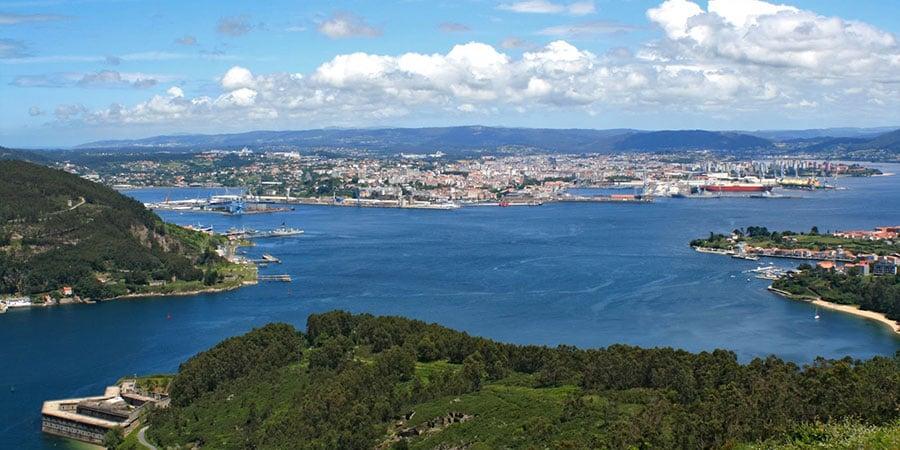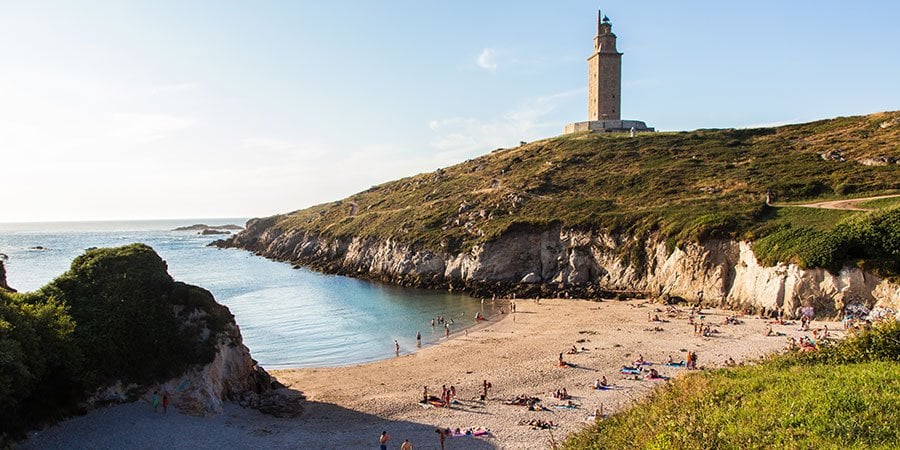Like the other Camino de Santiago routes, the Camino Inglés has a rich history. The pilgrimages from Scandinavia and the British Isles began in the 12th century. One of the most noteworthy episodes occurred in 1147 when a squadron of Crusaders arrived on their way to the Holy Land. This squadron took part in the conquest of Lisbon, aiding the first King of Portugal in his struggle against the Muslims.
The first maritime itinerary recorded between 1154-59 by the Icelandic monk Nicholas Bergson describes the voyage from Iceland to Bergen (Norway), Aalborg (Jutland) and Vyborg, sailing down the Kiel Canal, which marks the border between Denmark and Germany. This monk continued on foot to Rome, on his way to the Holy Land. Icelandic and Scandinavian pilgrims travelling to Santiago took this maritime route to Denmark, continuing their journey on foot to Roncesvalles or by boat to the north of the Iberian Peninsula.

During the Hundred Years War that raged between France and England throughout almost the entire 14th century and the first third of the 15th century, the British used boats to travel to Santiago. The vessels chartered for this purpose would set sail with permission from the Crown from London, Bristol, Southampton, and Plymouth and return to England loaded with goods from Galicia. The presence of these pilgrims in Santiago is well-documented by the ceramic pieces and coins dating from the 14th and 15th centuries found during excavations in the cathedral.
Other traces of seafaring pilgrimages can be found in the offerings made to the Apostle. The most outstanding is the famous portable alabaster altarpiece depicting the life of St. James, which was donated to the cathedral of Santiago de Compostela in 1456 by Father John Goodyear, who was the parish priest of the church of Chale on the Isle of Wight (Diocese of Winchester). This work of art, part of the collection of the Cathedral Museum, portrays five scenes in the life of the apostle: his vocation, his preaching in Hispania, his martyrdom in Palestine, and the transfer of his body by boat to Galicia.
The ‘ Pearl cross ‘ is another splendid offering related to the pilgrimages undertaken from the British Isles. This piece, crafted in gold and silver, displaying enamel work and studded with pearls and gems, was created in Paris around 1375-1400 and donated by King Jacob IV of Scotland (1475-1513). The divorce of Henry VIII (1509-47) from Catherine of Aragón caused him to break ties with the Catholic Church, thus ending the pilgrimages from England.
Whether they were noblemen, princes, clergymen, or plain citizens, the pilgrims found refuge in the hospitals on the Camino Ingles.

From Ferrol and A Coruña, the route was less arduous thanks to the services provided by the religious order of the Sancti Spiritus. Starting in the 14th century, the Franciscan Order opened the doors to their dwellings in Pontedeume and Betanzos under the auspices of the nobleman Fernan Perez de Andrade, ‘0 Bo’.
Along this stretch, which headed out from Ferrol, there were pilgrim hospitals run by the Hospitalers of the Sancti Spiritus located in Ferrol, Neda, Miño, Paderne, and Betanzos.
Another pilgrim hospital dedicated to San Lorenzo was founded in Bruma in 1140, becoming part of the Hospital of Santiago in 1175.
In the stretch from A Coruña, the city offered pilgrims accommodation run by the religious orders of Los Angeles, Santa Catalina, and San Andres. As they proceeded along the Way, there were facilities in Sigras and Poulo. Some of these establishments had chapels and cemeteries whose archives contained records of the deaths of English, Nordic, German, French, and Italian pilgrims. These records highlight the importance of the Jacobean pilgrimages along this route of the Camino de Santiago.
For more information about the Camino Ingles, please visit our blog, where you will find several Camino Inglés articles.


